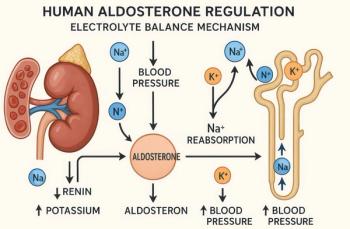
Leading Lipid Guidelines Disagree
From the ACC/AHA to the ESC/EAS, do you know where major global dyslipidemia guidelines agree and disagree? This 6-question quiz will answer that.
A
- 2014 American College of Cardiology/American Health Association (ACC/AHA)
- 2016 Canadian Cardiovascular Society (CCS)
- 2016 European Society of Cardiology/European Atherosclerosis Society (ESC/EAS)
- 2016 US Preventive Services Task Force (USPSTF)
- 2014 US Veterans Affairs/Department of Defense (VA-DoD)
We created a quiz based on the information, so find out what you know about where these organizations agree and diverge--then have a look at the full article. Good luck!
Question 1.
Answer: A. Total cholesterol
The 2014 ACC/AHA, 2016 USPSTF, 2016 CCS, 2016 ESC/EAS and 2014 VA-DoD guidelines all include age, sex, total cholesterol, HDL cholesterol, smoking and systolic blood pressure as risk estimators. They differ in whether they include ethnicity/race, treatment for hypertension, or diabetes.
Question 2.
Answer: C. ACC/AHA Pooled Cohort Equation
Both the ACC/AHA and USPSTF recommend using the ACC/AHA Pooled Cohort Risk Equations (PCRE). The CCS recommends the Framingham Risk Score (FRS). The Va-DoD recommends either the PCRE or FRS. The ESC/EAS recommends the Systemic Coronary Risk Evaluation (SCORE) estimator.
Question 3.
Answer: D. ESC/EAS
The ESC/EAS uses the SCORE risk estimator, which uses only fatal events in risk estimation (first fatal atherosclerotic event, including MI, stroke, sudden cardiac death, or other occlusive arterial disease).
The ACC/AHA recommends the ACC/AHA Pooled Cohort Risk Equations (PCRE), which uses the first hard atherosclerotic CVD event (CHD death, nonfatal MI, or stroke). The CCS recommends the FRS, which uses CHD, cerebrovascular events, PAD, and HF. The VA-DoD recommends either PCRE or FRS.
Question 4.
Answer: B. Lifestyle changes as first-line treatment
The ACC/AHA, USPSTF, CCS, Va-DoD, and ESC/EAS guidelines unanimously agree upon lifestyle change as first-line treatment, as well as statin therapy in those who require medication. However, they differ in their recommendations regarding dosing and titration of statins.
The ACC/AHA focuses on statin intensity. The USPSTF and VA-DoD emphasizes statin dose. The CCS and ESC/EAS use treat-to-target goals for LDL reduction.
Question 5.
Answer: B. False
The USPSTF and VA-DoD both state that insufficient evidence exists to support use of CAC scoring in clinical practice. The AHA/ACC and CCS guidelines recommend CAC scoring in asymptomatic, intermediate-risk middle-aged adults for whom treatment decisions are uncertain.
The ESC/EAS acknowledge that CAC scoring offers the best reclassification ability among available secondary markers for CVD, but offers no specific recommendation about it.
Source: Pallazola V, Hla D, Arvanitis M, Blumenthal RS, Martin SS. Major dyslipidemia guidelines and their discrepancies: a need for consensus [Expert analysis]. American College of Cardiology website.
Newsletter
Enhance your clinical practice with the Patient Care newsletter, offering the latest evidence-based guidelines, diagnostic insights, and treatment strategies for primary care physicians.


















































































































































































































































































